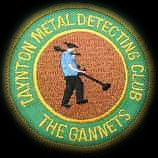
History of Taynton
Parish History
The Dobunni
Roman Iron Making
Roman mosaic
Taynton Parva
St Lawrence Church
Glass Making
Brick Yard & Pottery
Brass Mill
WWII
Typhoon Crash
Hampden Crash
US Camp
US Finds
Taynton Metal Detecting Club
The Gannets
Parish History

|
The parish of Taynton lies midway between Gloucester and Ross-on-Wye at the foot of May Hill and covers an area of 2200 acres.
In the iron age the Dobunni inhabited this area, and later on they became Romanized. The name Taynton is Saxon, being derived from Taeta’s Tun, meaning a number of small settlements made by the family of Taeta. The settlement prospered and by the time of Edward the Confessor the tun had become two manors, Tatinton held by Ulgar and Tetinton held by Alwin. Alwin was sheriff of the new shire of Gloucester, which had been carved out of the Saxon Kingdom of Mercia. At the time of Domesday, we find that William I had given the manor of Tatinton to William, son of Norman. The name of this owner is still perpetuated in Norman's Farm and Norman's Wood. The eight manors which had belonged to Alwin had been given to William Goizenboded, but Alwin was allowed to keep Tetinton for his life time. In medieval times Tetinton became Taynton Magna (Great Taynton) and Tatinton became Taynton Parva (Little Taynton). In the English Civil War the medieval village of Taynton Parva, its castle, church and manor house were completely razed. The remains of this 'lost village' can still be seen together with the old moats and earthworks. Finds from the club have increased our knowledge of local history. In particular club members have:
|